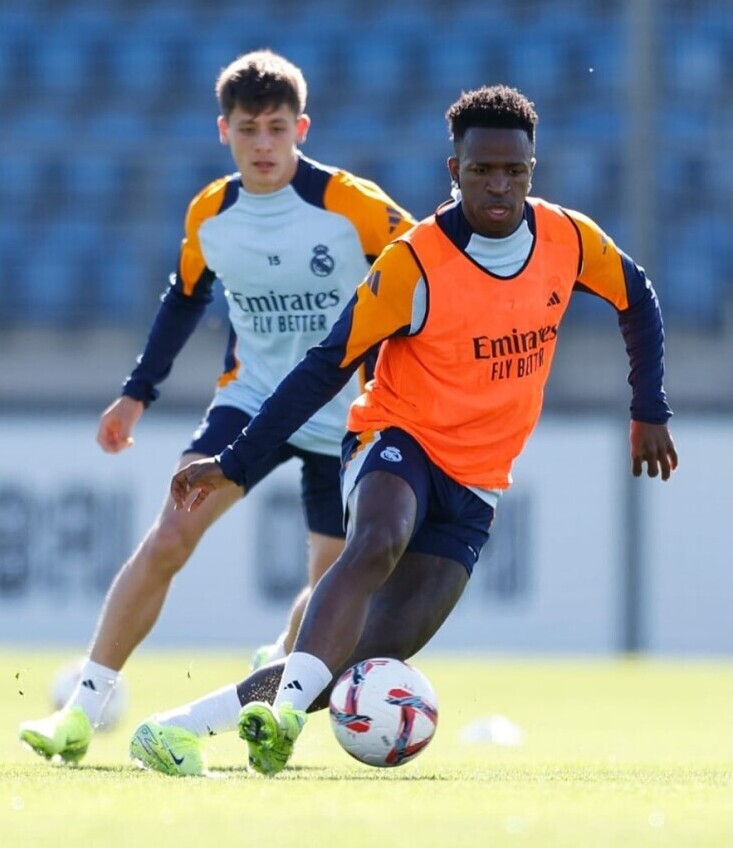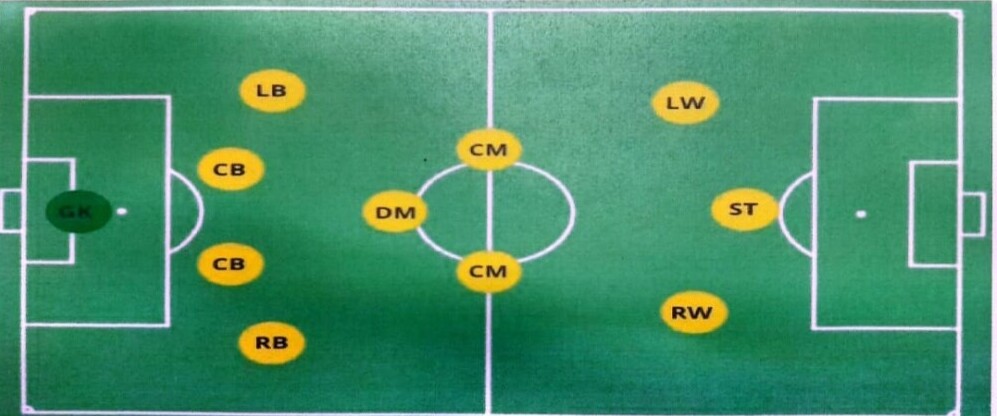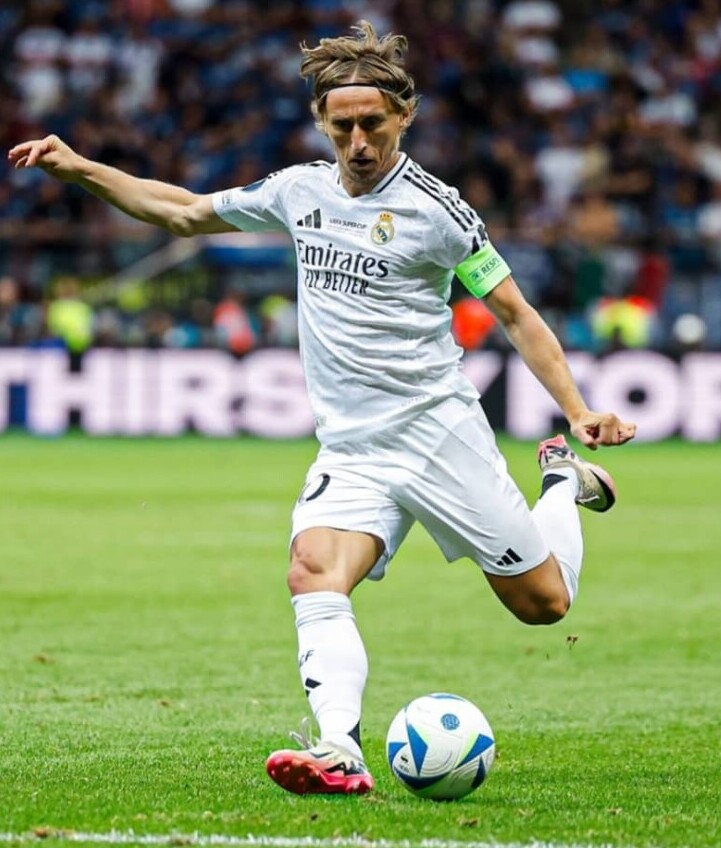Tactical skills are like the secret sauce in soccer.
They’re all about the strategies and decisions that players make during a match to outsmart the opposition.
Having good tactical awareness means knowing exactly where to be on the pitch, predicting the next move of your opponent, and making smart passes and decisions under pressure.
It’s what sets apart the professionals from the amateurs.
In the world of soccer, being tactically aware is just as important as having physical prowess.
Pro Tip: Master tactical awareness with the SKLZ Magnetic Soccer Coaching Board – a must-have for players and coaches alike!
Good tactical skills can make or break a team’s performance. When you’re tactically sound, you’re not just running around the field aimlessly.
You’re a step ahead, always thinking about where you should be and what you should be doing to support your teammates and control the game.
The difference between a good player and a great player often comes down to tactical awareness. Take, for instance, legendary players who seemed to always be in the right place at the right time.
They weren’t just physically skilled; their tactical intelligence allowed them to predict and react to the flow of the game better than anyone else.
Looking back at the history of soccer, tactics have evolved significantly. In the early days of the sport, the focus was more on physical skill and less on strategy.
But as the game developed, so did the importance of tactical planning. Teams and coaches have become more sophisticated in their strategic approaches, employing a variety of tactics to dominate their opponents and win matches.
This evolution highlights just how crucial tactical skills have become in modern soccer.
Core Elements of Tactical Skills
Tactical skills in soccer break down into several key elements that each player needs to master.
One major component is positioning. Always being in the right spot isn’t luck; it’s a skill honed over time.
Proper positioning not only gives your team more tactical options but can make a player’s life a lot easier by making sure they’re ready to intercept the ball, block opponents, or initiate an attack.
Train Smarter: Use STATSports Apex GPS Tracker to monitor your positioning and movement during training!
Communication is another cornerstone of strong tactical play. A team that talks well on the pitch can coordinate their actions much more effectively than one operating in silence.
Calls for man-on, time, or switch can make all the difference when time is short and the pressure is on.
Strategy and game planning form the backbone of tactical skills. This involves understanding and executing specific game plans set by the coach.
Whether it’s pressing high, sitting deep, or hitting on the counter, each player needs to understand their role in the strategy to maximize the team’s performance.
Recommended Read: “Soccer Systems and Strategies” by Jens Bangsbo offers deep insight into formations and team tactics.
A wide array of tactical formations exist in soccer, each with its pros and cons.
Some coaches swear by the traditional 4-4-2, while others might prefer the flexibility of a 3-5-2 or the attacking prowess of a 4-3-3.
Each setup demands different tactical skills from players and offers varied advantages during different stages of play.
Training to improve tactical skills is a key focus for clubs at every level. Player drills might focus on developing awareness, quick decision-making, or executing specific set-piece plays.
It’s about understanding the game’s strategic elements and bringing them to life on the pitch.
Get Visual: Improve team discussions with the GoSports Soccer Magnetic Coaching Board – great for explaining formations and transitions.
Common Tactical Systems and Their Applications
Exploring tactical systems can feel like diving into the heartbeat of soccer strategy. Each system focuses on different aspects of offense, defense, and overall team dynamics, giving teams unique ways to approach a match.
Take the classic 4-4-2, for instance. It’s probably one of the most well-known setups, offering a solid balance between attack and defense.
This formation can create a robust midfield while providing enough players up front to apply pressure on the defense.
On the other hand, the 4-3-3 formation is all about maximizing attacking power.
With three forwards leading the charge, this system focuses on overwhelming the opposition’s defense, but it requires solid tactical discipline from the midfield to ensure the team isn’t exposed defensively.
Some teams thrive with the 3-5-2 lineup, which emphasizes control in the midfield. By deploying five midfielders, there’s a focus on retaining possession and dictating the flow of the game, but the defenders need to be versatile and quick to adapt to rapid counterattacks.
The strengths and weaknesses of each system go beyond just player positioning. A team’s ability to adjust tactics on the fly can significantly impact the match’s outcome.
Coaches often tweak these formations based on the opposition and specific match situations, making tactical flexibility essential.
Teams known for adaptability often surprise their opponents. By switching formations mid-game, they can exploit weaknesses or respond to challenges better.
This tactical dynamism allows them to maintain an edge during the most critical moments in a match.
Developing Tactical Skills for Soccer Players
Developing strong tactical skills requires dedication and strategic training, often setting players on a path to improvement that’s both challenging and rewarding.
Square one is all about focusing on exercises and drills aimed to boost tactical awareness. Think of small-sided games; these can tremendously improve decision-making speed and spatial awareness.
Practice With Purpose: Use GOLME PRO Pop-Up Soccer Goals in small-sided drills to simulate real-match pressure situations.
Coaches play a pivotal role in shaping a player’s tactical growth. They’re not just strategists on the sidelines; they’re mentors helping players read the game better.
With the right guidance, players learn to anticipate movements and make smarter plays, elevating their overall performance.
Real-world examples show how some players become masters of tactical play. Player like Luka Modric’ has built his career on exceptional tactical skills, seemingly orchestrating the game from midfield with a sixth sense for the next move.
Learn From the Best: Use a GoPro HERO12 + Chest Mount to record your games for detailed review and improvement.
Studying footage of players like these can provide invaluable insights into tactical thinking.
Advancements in technology have made a massive impact on how players can develop tactically.
Tools like video analysis let players and coaches examine matches in fine detail, breaking down strategies and identifying room for improvement.
This deeper understanding fuels smarter training sessions, helping players master tactics more effectively.
To truly shine on the pitch, embracing tactical growth is essential. Whether you’re a newbie or a seasoned player, focusing on these elements will give you that edge, making every minute on the field an opportunity to outsmart your opponents.
Conclusion
Tactical skills are the backbone of successful soccer teams. By understanding and mastering these skills, players can elevate their game and make a significant impact on the pitch.
Whether you’re a seasoned player or just starting out, developing your tactical awareness can help you outsmart opponents and achieve your goals.
Boost Your Tactical IQ: Check out “Attacking Soccer: A Tactical Analysis” to expand your strategic mind!
Call to Action
Now that you’ve learned about the importance of tactical skills in soccer, it’s time to put your knowledge into practice!
Share your favorite tactical formations or strategies in the comments below. Are you a soccer analyst or coach?
Let’s discuss how tactical skills can be developed and improved in your team. Players, what tactics do you find most effective on the pitch?
Let’s get the conversation started!
This website contains Amazon affiliate links. If you purchase after clicking one of these links, I may earn a small commission at no additional cost to you.




2 Responses
I love the idea of the SKLZ Magnetic Soccer Coaching Board. This is a great way for coaches to strategize with the players and get then to think strategically what their next move should be.
I had no idea that the difference between a good player and a great player was tactical awareness. I always thought it was more about ball skills than anything else, but after reading this article, tactical awareness makes so much more sense.
It must be quite a feat for the coach to teach his team all the various formations and also get them to work.
Hi Michel,
Thank you so much for your insightful comment.
I’m glad to hear that you found the SKLZ Magnetic Soccer Coaching Board idea helpful. It’s definitely a fantastic tool for coaches to visually map out strategies and help players better understand their positioning and movement on the field.
As you mentioned, having players think strategically about their next move is a game-changer.
You’re absolutely right—tactical awareness is often the difference between a good player and a great one. While ball skills are essential, understanding when and where to move, how to read the game, and being able to adapt to different situations on the pitch can truly elevate a player’s performance.
It’s something that can be developed with time, practice, and good coaching, which is why it’s so important for coaches to focus on both technical and tactical training.
And yes, teaching formations and strategies can be quite a challenge for coaches, but it’s also incredibly rewarding. When players start to understand how different tactics fit together and can execute them in real-time, it really transforms the way the team plays as a unit.
Thanks again for your great points—I’m glad the article helped clarify the importance of tactical awareness.
Keep focusing on developing those strategies, and I’m sure you’ll see a noticeable improvement in both your understanding of the game and your team’s performance!
Best regards
Raymond.